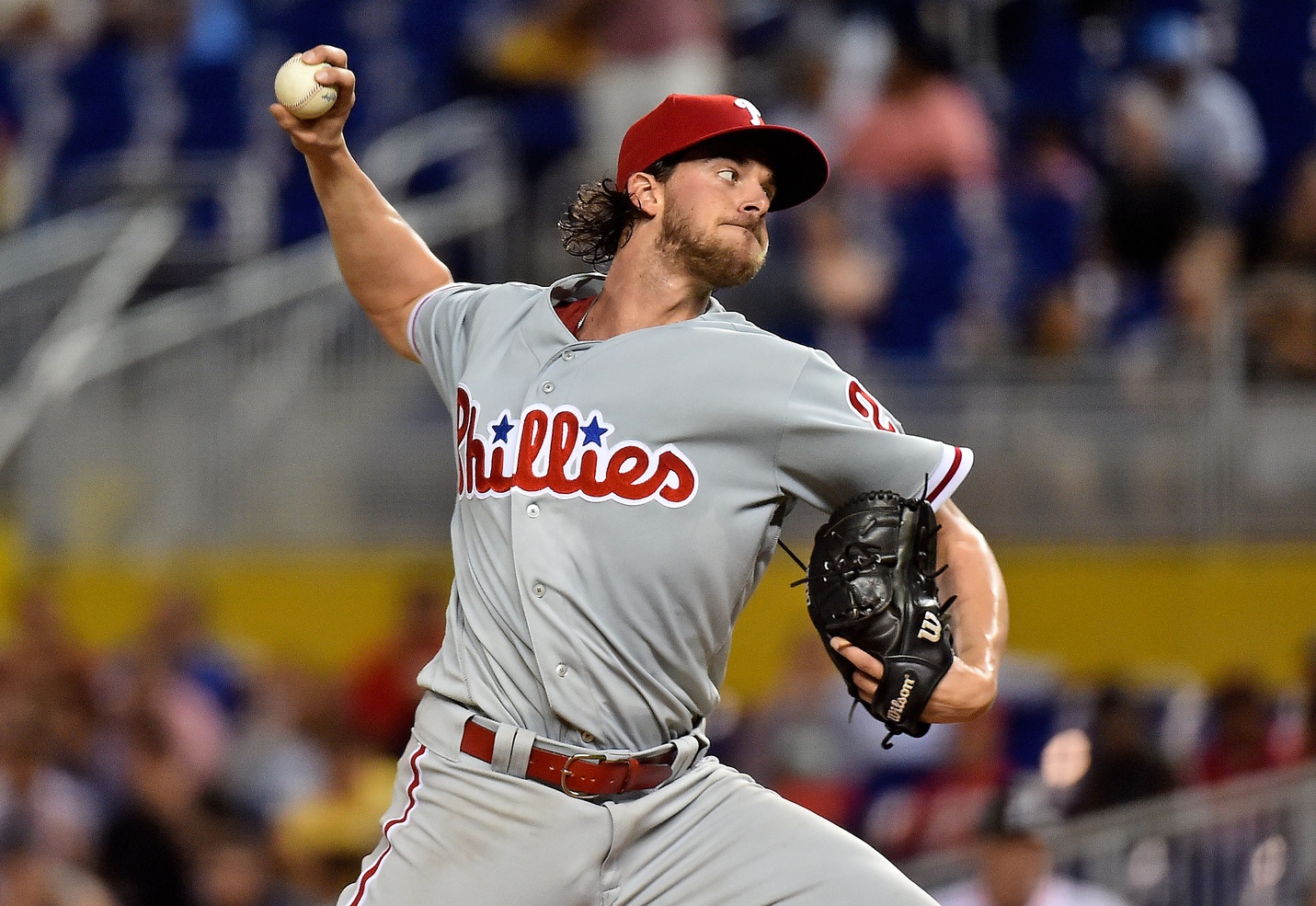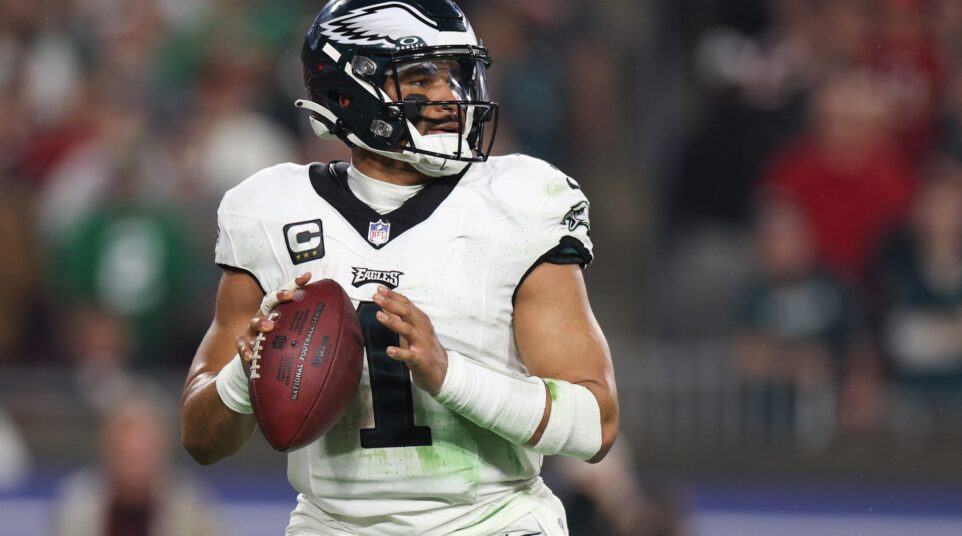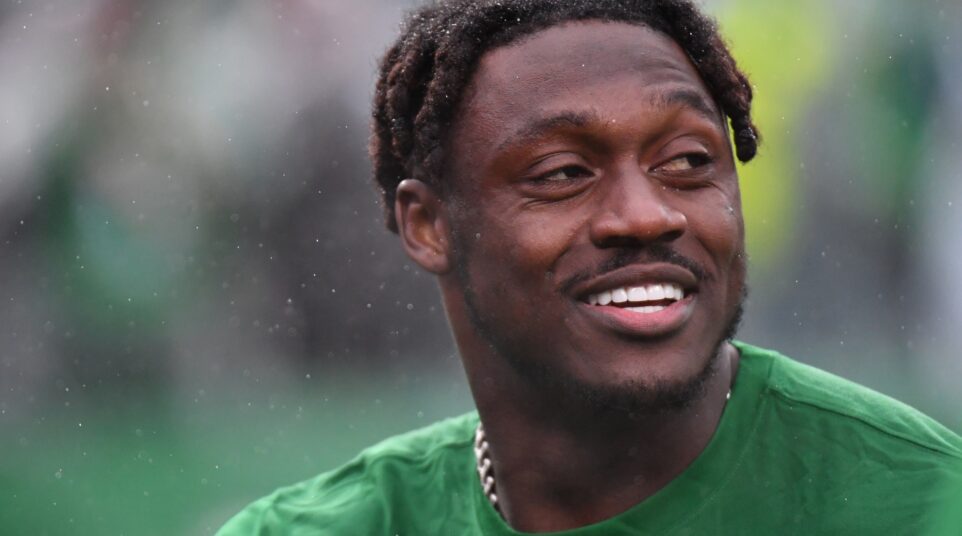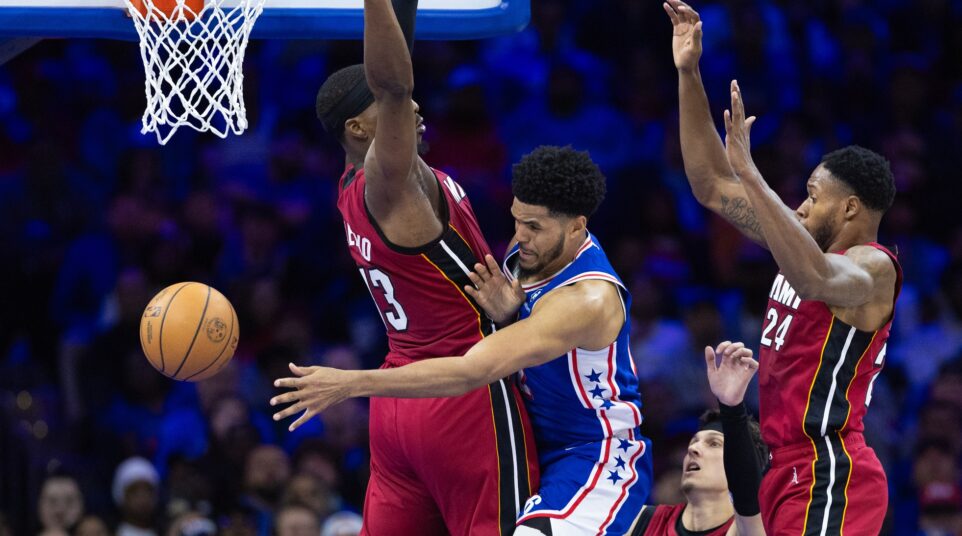
Phillies Ace Aaron Nola is a Man Without a Rotation
As Aaron Nola mowed down the hapless Mets en route to an 8-3 victory Sunday, it was difficult not to think of the ineffectiveness of the rest of the Phillies’ starting rotation.
Nola didn’t need to bring his best stuff to the ballpark. His teammates jumped on Mets starter Zack Wheeler in the top of the first inning, plating four runs and building a comfortable lead before Nola even toed the rubber. Nevertheless, he delivered a performance befitting his status as the best pitcher on the staff.
For nearly seven innings, he was dominant; for five of those frames, he was unhittable. Nola kept the Mets off balance with a steady diet of fastballs, curveballs, and changeups, never giving them an opportunity to climb out of the hole they dug for themselves at the beginning of the game. Any signs of fatigue from a 120-pitch, 8-inning outing five days prior in Atlanta were not evident.
After a disastrous April that saw his ERA peak at 7.45, Nola has improved with each passing month; at the conclusion of Sunday’s outing, his ERA sits at 3.74. Carving up New York’s lineup was a fine follow-up to the start in Atlanta, which served as Nola’s most impressive start of the 2019 season.
The Phillies front office is undoubtedly ecstatic as Nola reverts to his 2018, N.L.-Cy-Young-Award-finalist form. And yet, Matt Klentak and company must be wondering why their organization seems unable to develop any of their other young guns into a dependable rotation piece for an aspiring contender.
This past offseason, which culminated in the signing of Bryce Harper, was supposed to mark the end of the Phillies’ long journey through the baseball wilderness. Moreover, the spending splurge in the winter was meant to add to a solid foundation rather than usher in a complete overhaul. The various seeds the franchise had planted in the fruitless years of 2013-2018 were overdue to bloom.
We were told during those years to be patient. The team had to let its young talent develop, and what better way to hone one’s craft than in the crucible of the big leagues?
We watched as Vince Velasquez learned to become a pitcher instead of a thrower. Four seasons into his tenure, we are still waiting for the transition.
There are times when Velasquez dazzles the opposition with his overpowering fastball. The most compelling evidence of this ability came in one of Velasquez’s first starts in a Phillies uniform, when he struck out 16 San Diego Padres en route to a 3-hit, complete game shutout:
All but three of Velasquez’s punch outs came via the fastball. Also, take note of how frequently he hit catcher Cameron Rupp’s glove. When Velasquez commands his fastball, he’s in control. When he loses his feel for the pitch, or when opponents catch up to the heat, the wheels fall off. Velasquez’s inability to develop even one secondary pitch that he trusts and on which he can rely has prevented him from taking the next step in his development.
In truth, Velasquez has thrown more sliders thus far in 2019 than he has in the past. Per Fan Graphs, Velasquez has gone to his slider 22.3% of the time. This increased usage has come at the expense of his other offspeed pitches, however. In fact, Velasquez has called on his fastball more this season than at any point in his career, featuring the pitch 68% of the time. Without a quality offspeed pitch to keep them honest at the plate, hitters can key in on the fastball. Too often against Velasquez, they do.
Despite Nick Pivetta’s inauspicious 2018 campaign, we were told that 2019 would be different for the young hurler. Citing spin rates and a preponderance of soft hits, the disciples of sabermetrics targeted Pivetta in the preseason as a candidate for a breakout year. NBCSN’s Corey Seidman laid out a compelling case for Pivetta:
These days, it’s common to see teams, writers and commentators refer to pitchers as being unlucky when their batting average on balls in play is higher than the league average. It’s not always the case. Sometimes it’s the easy way out.
Pivetta, though, actually was unlucky.
According to Sports Info Solutions, the Phillies’ range and positioning cost Pivetta 24 runs last season — seven runs more than anyone in the majors. The Phillies, with their league-worst defense in 2018, had three of the top five pitchers in this unfortunate category, with Vince Velasquez and Zach Eflin tied for third at 14 runs.
It wasn’t just the analytics community that was bullish on Pivetta. Jim Salisbury wrote a preseason column focusing on the pitcher’s improvement, which was bolstered by the laudatory whispers of a few anonymous scouts.
Notwithstanding a two-start stretch in June in which Pivetta quieted the bats of the mighty Dodgers for six innings, and then tossed a complete game against the Reds, 2019 Nick Pivetta has looked a lot like 2018 Nick Pivetta. To be sure, he’s been the recipient of bad luck. But Pivetta has a knack for making a bad situation worse.
Take his most recent start against the Braves on Wednesday. Pivetta made quick work of Atlanta in the first three innings. In the fourth, a throw by Rhys Hoskins to second base on a double-play attempt hit runner Dansby Swanson in the shoulder and bounced off Jean Segura’s chest. Instead of two outs and the bases empty, Pivetta was forced into a high-leverage situation against Josh Donaldson. Donaldson promptly deposited an 80 mile-per-hour curveball into the Braves’ bullpen. Pivetta would concede another three-run home run to Austin Riley in the sixth inning. Resident Crossing Broad beat writer Bob offered up a succinct assessment:
Not sure I’ve ever seen a pitcher worse at navigating himself out of trouble than Nick Pivetta. Then again, if nobody is going to hit, I guess it doesn’t matter.
— Bob Wankel (@BobWankelCB) July 4, 2019
Perhaps the most confounding of all the Phillies’ development projects is Jerad Eickhoff. In 2015, the Phillies acquired Eickhoff, among other prospects, from the Rangers in a trade for Cole Hamels. It’s worth taking a quick detour to revisit the Phillies’ spoils from that trade, especially as Klentak considers which of his minor league treasures with which to part in exchange for an asset that can bolster the Phillies’ ability to contend for a playoff spot. In exchange for Hamels and Jake Diekman, the Phillies received the aforementioned Eickhoff; catcher Jorge Alfaro; outfielder Nick Williams; pitchers Jake Thompson and Alec Asher; and veteran pitcher Matt Harrison.
Harrison would never don a Phillies uniform, having suffered a back injury that would end his career. His inclusion in the deal essentially increased the prospect haul the Phillies were able to ransom from the Rangers. Alec Asher is currently pitching in China, while Jake Thompson has taken his talents to South Korea. Alfaro was included in the deal that brought All-Star catcher J.T. Realmuto to Philadelphia. Williams is toiling in Lehigh Valley, while Eickhoff continues to struggle with his health and consistency on the major league roster. Keep all of this in mind in the next few weeks as debates rage over which prospects are “untouchable” or “can’t miss.”
Eickhoff is the anti-Velasquez. He features a “show me” fastball that sets up an effective slider and a devastating, 12-to-6 curveball. When he’s at his best, Eickhoff can dominate a lineup. Most of the time, especially lately, Eickhoff has not been at his best. Before his demotion to the bullpen in June, Eickhoff served up 5 home runs in a game against the Arizona Diamondbacks. Shortly thereafter, Eickhoff landed in an even more familiar place: the injury list.
Last, but certainly not least, we come to the curious case of Zach Eflin. The best word to describe Eflin’s career thus far would be erratic. Very rarely does Eflin retreat to that bastion of pitching mediocrity- the quality start. Instead, he will either turn in a remarkable effort or a regrettable performance. One month of exceptional outings might convince an observer that Eflin has turned a corner in his development. Sure enough, though, he’ll follow a hot month with a multi-start cold spell.
The only consistency Eflin offers is inconsistency. So it seems to go with the rest of the young horses in the rotation stable.
As the front office prepares for the second half of the season and a looming trade deadline, GM Matt Klentak must consider whether the club he has fashioned for the 2019 campaign is worthy of reinforcements that will deplete his prospect pipeline. If he decides to make midseason roster upgrades, the first item on the shopping list must be a starter. It should probably be the second item as well.
Indeed, the Phillies have suffered through a rash of injuries that have depleted their bullpen corps and stolen key contributors from their everyday lineup for stretches of time. The extended absences were a major driver of their June slide, which drove them from first place in the NL East to third. If it weren’t for the lifeline the Mets offered in the past week, the Phils quite possibly would have been sitting below the .500 mark heading into the Midsummer Classic.
During a 162 game season, the offense will endure dry spells. The bullpen might not always offer effective relief, especially when the injury bug bites. The one ingredient that can carry a team through the rough patches and propel them to the playoffs is quality starting pitching. Even matchup-happy managers like Gabe Kapler learn to appreciate the value of a pitcher who can regularly deliver six to seven innings every outing, thus saving the innings a bullpen might need to work. Overtaxed relief arms can spell disaster for a contender in August and September, as Kapler learned the hard way last season.
Klentak should not need to go to the trade well to augment his staff, but the collective output of the starters outside of Nola has forced his hand. Which of these pitchers would you count on to make the start in a one-game wildcard playoff, assuming Nola were unavailable and Jake Arrieta is unable to return to form? Each one boasts undeniable talent, but neither Eflin, Eickhoff, Pivetta, nor Velasquez has been able to put together the puzzle pieces of their potential to unlock the mysteries of consistent big league performance.
Klentak has been at the poker table long enough to realize the one ace in his possession will not be enough to win. It’s time to deal in for a better hand, or fold and wait for the next draw in 2020.





